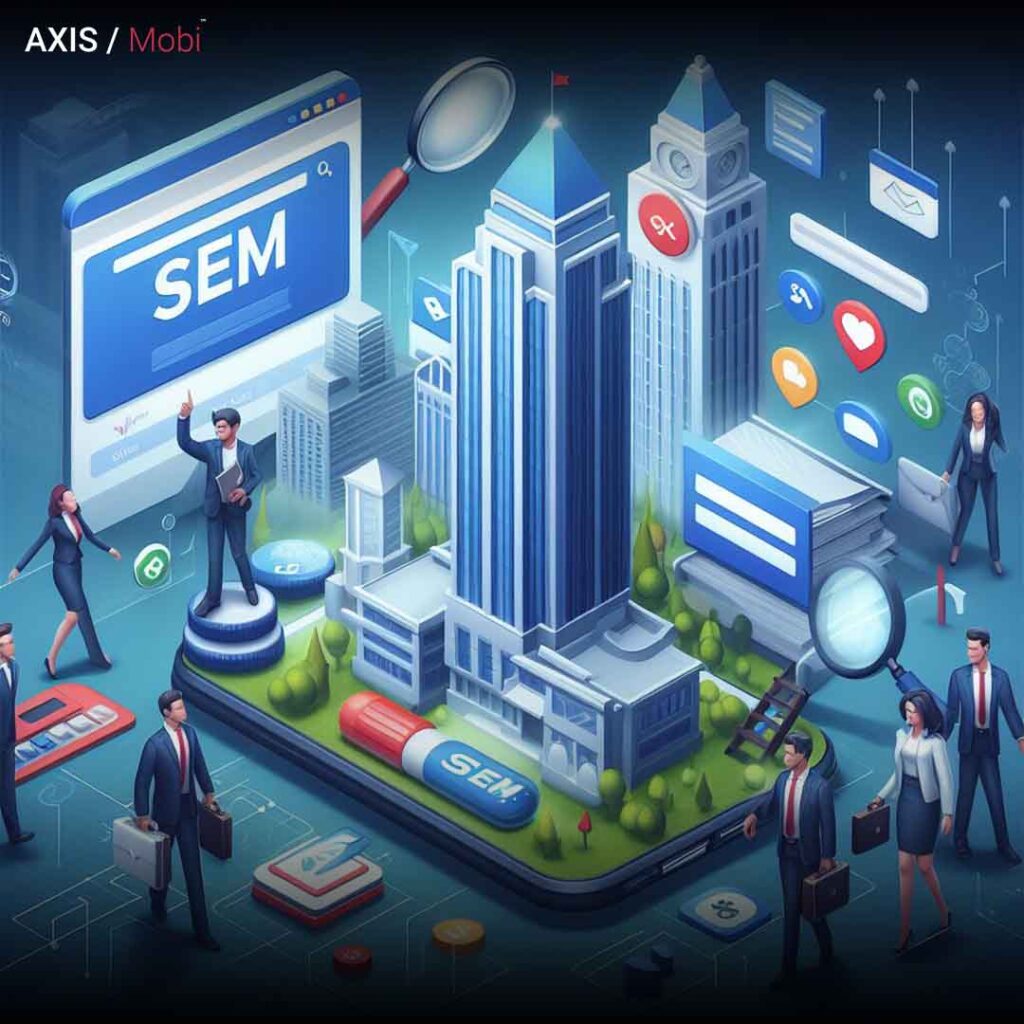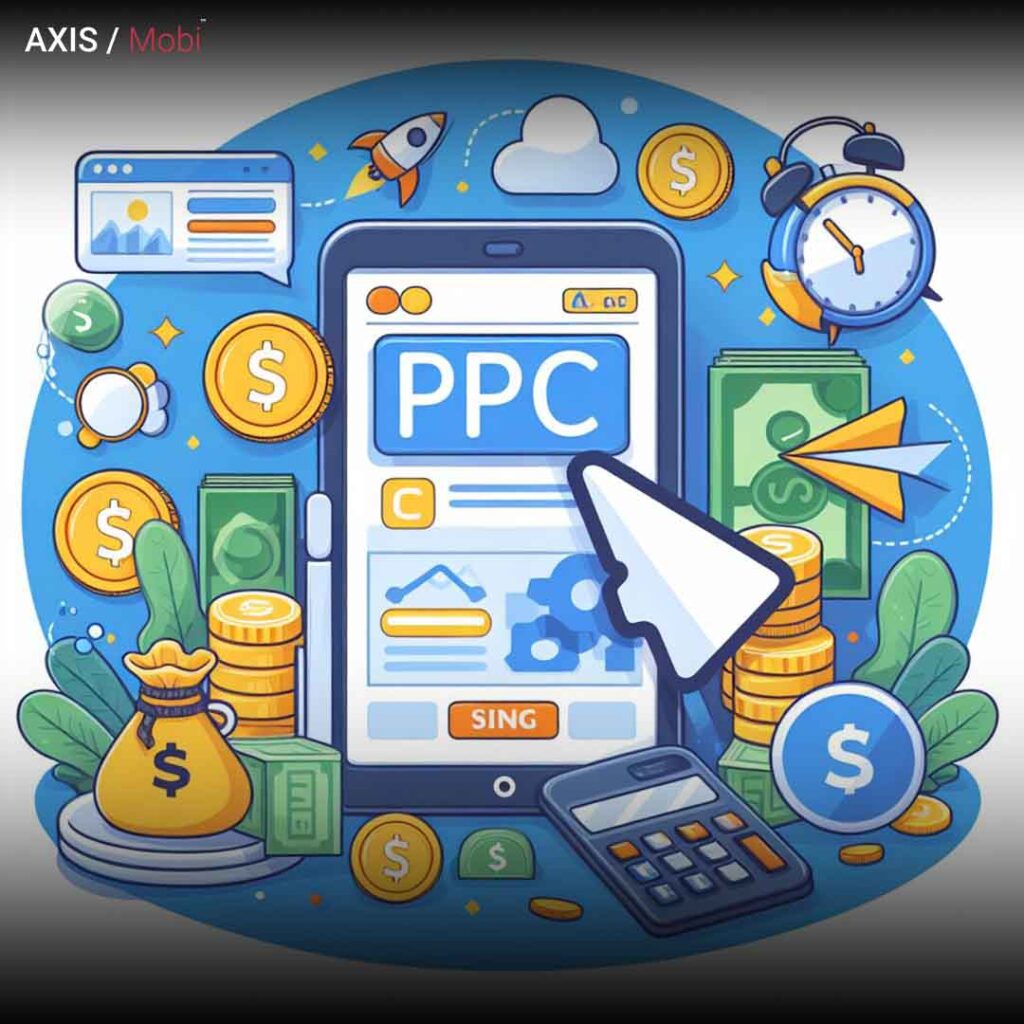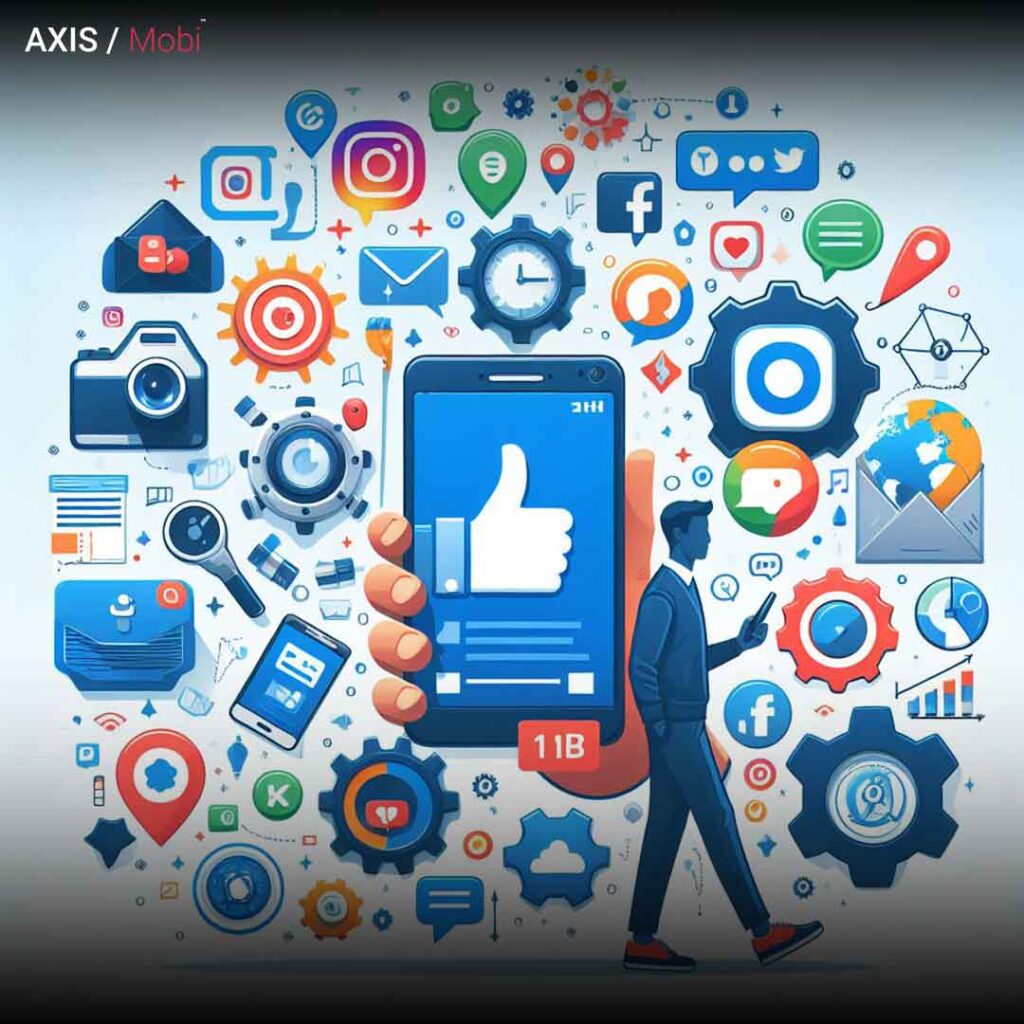Digital marketing has become an integral part of modern business strategies, helping organizations reach wider audiences, engage customers, and drive growth. To navigate the dynamic and ever-evolving landscape of digital marketing effectively, one needs a firm grasp of the terminology and concepts that define this field. Whether you’re a seasoned marketing professional or a newcomer looking to get started, this comprehensive guide will provide you with valuable insights into important digital marketing terms and concepts.
The Foundation of Digital Marketing: Terminology
Digital marketing terminology serves as the foundation upon which all marketing efforts are built. It’s the shared language that connects marketers, advertisers, SEO specialists, content creators, and professionals across various domains. Here’s why understanding this terminology is crucial:
- Effective Communication: Digital marketing professionals rely on a specific set of terms to communicate their ideas, strategies, and objectives clearly. Effective communication is essential for collaboration within marketing teams and conveying information to clients or stakeholders.
- Strategic Planning: Digital marketing strategies are often outlined using specific terms and concepts. Without a common vocabulary, it would be challenging to develop and execute effective marketing campaigns.
- Measurement and Analysis: Digital marketing terminology is integral to measuring the success of campaigns, websites, and content. Metrics like Click-Through Rate (CTR) and Return on Investment (ROI) are central to evaluating the performance of marketing efforts.
- Staying Current: The digital marketing landscape is marked by constant evolution. New terms and concepts emerge regularly as technology advances and consumer behavior changes. Staying up-to-date with these terms is essential for adapting to emerging trends and technologies.
- Competitive Edge: In a competitive field, professionals who are well-versed in digital marketing terminology stand out. Clients and employers value individuals who can navigate and communicate effectively in the language of digital marketing.
Now that we’ve established the significance of digital marketing terminology, let’s delve into the essential terms and concepts that define this dynamic field.
Essential Digital Marketing Terms and Concepts
1. Search Engine Optimization (SEO)

Definition: SEO is the practice of optimizing a website or web page to increase its visibility in organic (non-paid) search engine results. The goal is to rank higher in search engine results pages (SERPs) for relevant keywords, leading to more organic traffic.
Importance: SEO is critical for improving a website’s online visibility and driving organic traffic, reducing the need for paid advertising.
2. Search Engine Marketing (SEM)

Definition: SEM is a digital marketing strategy that involves using paid advertising to appear in search engine results. It includes Pay-Per-Click (PPC) advertising, where advertisers pay a fee each time their ad is clicked.
Importance: SEM allows businesses to reach potential customers who are actively searching for products or services, providing a highly targeted advertising approach.
3. Pay-Per-Click (PPC) Advertising

Definition: PPC advertising is an online advertising model in which advertisers pay a fee each time their ad is clicked. It’s commonly used in search engine advertising, display advertising, and social media advertising.
Importance: PPC advertising offers precise targeting and immediate results, making it a powerful tool for generating website traffic and conversions.
4. Social Media Marketing

Definition: Social media marketing is the use of social media platforms like Facebook, Instagram, Twitter, and LinkedIn to promote products, services, or brands. It involves creating and sharing content to engage with the target audience.
Importance: Social media marketing enables businesses to build brand awareness, connect with customers, and drive website traffic through interactive content.
5. Email Marketing

Definition: Email marketing is a digital marketing strategy that involves sending emails to a group of recipients with the goal of promoting products, services, or building relationships. It can include newsletters, promotional emails, and transactional emails.
Importance: Email marketing is a cost-effective way to communicate with customers, nurture leads, and drive conversions.
6. Content Marketing
Definition: Content marketing is the creation and distribution of valuable and relevant content to attract and engage a target audience. It encompasses blog posts, articles, videos, infographics, and more.
Importance: Content marketing establishes authority, drives organic traffic, and builds brand loyalty by providing valuable information to consumers.
7. Analytics and Reporting
Definition: Analytics in digital marketing refers to the collection and analysis of data to measure the performance of marketing campaigns. Reporting involves presenting these findings in a comprehensible manner to stakeholders.
Importance: Analytics and reporting provide insights into the effectiveness of marketing efforts, helping marketers make data-driven decisions.
8. Conversion Rate Optimization (CRO)
Definition: CRO is the process of optimizing a website or landing page to increase the percentage of visitors who take a desired action, such as making a purchase or signing up for a newsletter.
Importance: CRO can significantly impact a website’s ROI by improving the conversion rate of visitors into customers or leads.
9. Affiliate Marketing
Definition: Affiliate marketing is a performance-based marketing strategy in which businesses reward affiliates (publishers or partners) for driving traffic or sales to their website through the affiliate’s marketing efforts.
Importance: Affiliate marketing allows businesses to expand their reach and increase sales by leveraging the marketing efforts of affiliates.
10. Influencer Marketing
Definition: Influencer marketing involves collaborating with influencers—individuals with a substantial and engaged online following—to promote products or services to their audience.
Importance: Influencer marketing leverages the credibility and reach of influencers to connect with niche audiences effectively.
11. Landing Page Optimization
Definition: Landing page optimization is the process of improving a web page’s elements to increase its conversion rate. It involves optimizing headlines, visuals, and calls to action (CTAs) to encourage user interaction.
Importance: Effective landing page optimization can boost conversions and improve the overall performance of marketing campaigns.
12. Mobile Marketing
Definition: Mobile marketing focuses on reaching and engaging users on mobile devices, such as smartphones and tablets. It includes mobile-responsive website design, mobile apps, and SMS marketing.
Importance: As mobile device usage continues to grow, mobile marketing is crucial for reaching a broad audience effectively.
13. Native Advertising
Definition: Native advertising is a type of online advertising that matches the form and function of the platform on which it appears. It blends seamlessly with the surrounding content, making it less disruptive to users.
Importance: Native advertising can enhance user engagement by delivering non-disruptive, relevant content.
14. Retargeting (Remarketing)
Definition: Retargeting, or remarketing, is a digital advertising strategy that targets users who have previously visited a website but did not make a desired action, such as a purchase. It aims to re-engage these users through personalized ads.
Importance: Retargeting helps businesses recapture lost leads and improve conversion rates.
15. User Experience (UX)
Definition: User experience (UX) refers to the overall experience a user has when interacting with a website, app, or digital product. It encompasses design, usability, and accessibility.
Importance: A positive UX is essential for retaining users, reducing bounce rates, and increasing conversions.
16. A/B Testing
Definition: A/B testing, also known as split testing, involves comparing two versions (A and B) of a webpage or marketing element to determine which one performs better in terms of user engagement or conversion.
Importance: A/B testing allows marketers to optimize elements of their campaigns for better results.
17. Customer Relationship Management (CRM)
Definition: CRM refers to the strategies and technologies used to manage interactions and relationships with customers. It involves collecting and analyzing customer data to improve relationships and drive sales.
Importance: CRM helps businesses build and maintain customer loyalty and enhance their overall customer experience.
18. Key Performance Indicator (KPI)
Definition: KPIs are measurable metrics used to evaluate the success of marketing campaigns. They vary depending on campaign goals and can include metrics like conversion rate, CTR, and customer acquisition cost.
Importance: KPIs provide a clear and objective way to assess marketing performance and make data-driven decisions.
19. Call to Action (CTA)
Definition: A CTA is a prompt or instruction that encourages users to take a specific action, such as signing up for a newsletter, making a purchase, or clicking a link.
Importance: CTAs are critical for guiding users through the desired conversion path and improving the effectiveness of marketing efforts.
20. Content Management System (CMS)
Definition: A CMS is a software platform that allows users to create, manage, and publish digital content, such as websites, blogs, and online stores, without requiring advanced technical skills.
Importance: CMS platforms simplify content creation and website management, making it accessible to non-technical users.
21. E-commerce
Definition: E-commerce refers to the buying and selling of goods or services online. It includes online stores, digital payment systems, and electronic transactions.
Importance: E-commerce is a significant driver of online revenue for businesses and offers convenience to consumers.
22. Bounce Rate
Definition: Bounce rate is the percentage of visitors who navigate away from a website after viewing only one page, typically within a short period. A high bounce rate can indicate issues with site engagement.
Importance: A low bounce rate suggests that users are finding value and engaging with a website’s content.
23. Viral Marketing
Definition: Viral marketing is a marketing strategy that relies on creating content that spreads rapidly and organically through social media and other online platforms.
Importance: Viral marketing can lead to massive exposure and increased brand awareness.
24. Lead Generation
Definition: Lead generation is the process of attracting and converting potential customers (leads) into prospects who have expressed interest in a product or service.
Importance: Lead generation is essential for filling the sales funnel and nurturing potential customers through the buying process.
25. Organic Traffic
Definition: Organic traffic refers to the visitors who arrive at a website through unpaid search engine results rather than through paid advertising.
Importance: Organic traffic is valuable as it reflects users actively searching for relevant content or products.
26. Paid Traffic
Definition: Paid traffic consists of visitors who come to a website through paid advertising campaigns, such as PPC or display advertising.
Importance: Paid traffic can quickly generate visibility and drive targeted traffic to a website.
27. Backlink
Definition: A backlink is a hyperlink from one website to another. They play a crucial role in SEO, as search engines consider quality backlinks when ranking websites.
Importance: High-quality backlinks can improve a website’s authority and search engine ranking.
28. Keyword Research
Definition: Keyword research is the process of identifying and analyzing the words and phrases that users type into search engines. It helps marketers understand user intent and target relevant keywords.
Importance: Effective keyword research is essential for optimizing content and SEO strategies.
29. SERP (Search Engine Results Page)
Definition: SERP is the page displayed by a search engine in response to a user query. It includes organic search results, paid ads, featured snippets, and other elements.
Importance: Understanding SERPs is crucial for SEO and SEM strategies, as they dictate how users interact with search results.
30. CTR (Click-Through Rate)
Definition: CTR is the ratio of users who click on a specific link to the number of total users who view a page, email, or advertisement.
Importance: CTR is a vital metric for measuring the effectiveness of online advertising and content engagement.
31. ROI (Return on Investment)
Definition: ROI is a metric that calculates the profitability of an investment. In digital marketing, it’s often used to evaluate the return generated from advertising spend.
Importance: ROI analysis helps marketers allocate resources efficiently and assess the effectiveness of marketing campaigns.
32. Algorithm
Definition: An algorithm is a set of rules or instructions used by search engines and social media platforms to rank and display content. Understanding algorithms is crucial for optimizing content.
Importance: Algorithms determine content visibility and reach on digital platforms.
33. Impressions
Definition: Impressions refer to the number of times an ad or piece of content is displayed to users, regardless of whether they interact with it.
Importance: Impressions provide insights into the reach and visibility of marketing efforts.
34. Ad Copy
Definition: Ad copy is the text or content used in advertising materials, such as online ads or email campaigns, to convey a message and encourage user action.
Importance: Well-crafted ad copy can significantly impact the success of advertising campaigns.
35. B2B (Business-to-Business) Marketing
Definition: B2B marketing focuses on selling products or services to other businesses rather than individual consumers. It involves marketing strategies tailored to the needs of business clients.
Importance: B2B marketing requires specialized approaches to reach and engage business clients effectively.
36. B2C (Business-to-Consumer) Marketing
Definition: B2C marketing involves selling products or services directly to individual consumers. It often targets a broader audience with consumer-oriented strategies.
Importance: B2C marketing aims to create brand awareness, drive purchases, and build loyalty among individual consumers.
37. Customer Persona
Definition: A customer persona is a fictional representation of an ideal customer based on market research and data. It helps marketers understand and target specific audience segments.
Importance: Customer personas guide marketing strategies by ensuring content and messaging resonate with the intended audience.
38. Demographics
Definition: Demographics refer to the statistical data used to describe the characteristics of a population or audience, including age, gender, income, education, and more.
Importance: Understanding demographics is essential for tailoring marketing efforts to specific audience segments.
39. Geotargeting
Definition: Geotargeting is the practice of delivering content or ads to users based on their geographic location. It allows for localized marketing efforts.
Importance: Geotargeting enhances relevance by delivering content that is specific to a user’s location.
40. Hashtag
Definition: A hashtag is a word or phrase preceded by the “#” symbol, often used on social media platforms to categorize and discover content related to a specific topic or theme.
Importance: Hashtags increase content visibility and engagement on social media by connecting users with relevant discussions.
41. Engagement Rate
Definition: Engagement rate measures the level of interaction and involvement that users have with content. It often includes likes, comments, shares, and other forms of interaction.
Importance: High engagement rates indicate that content resonates with the audience and encourages interaction.
42. User-Generated Content (UGC)
Definition: UGC refers to content created and shared by users, rather than by brands or organizations. It can include reviews, testimonials, social media posts, and more.
Importance: UGC provides authenticity and social proof, influencing the purchasing decisions of potential customers.
43. PPC Bid
Definition: A PPC bid is the maximum amount an advertiser is willing to pay for a click on their ad in a Pay-Per-Click (PPC) advertising campaign.
Importance: PPC bids determine ad placement and visibility in search engine results.
44. Quality Score
Definition: Quality Score is a metric used in PPC advertising to evaluate the quality and relevance of an ad and its corresponding landing page. It affects ad placement and cost.
Importance: A high Quality Score can result in lower advertising costs and better ad positions.
45. SERM (Search Engine Reputation Management)
Definition: SERM involves monitoring and managing an individual’s or brand’s online reputation by influencing search engine results and online content.
Importance: SERM helps protect a brand’s image and manage online perception.
46. Long-Tail Keywords
Definition: Long-tail keywords are specific, often longer phrases that users enter into search engines. They are less competitive and target niche audiences.
Importance: Long-tail keywords can improve search engine rankings and attract highly targeted traffic.
47. Social Proof
Definition: Social proof is the psychological phenomenon where people assume the actions of others reflect the correct behavior in a given situation. It’s often used in marketing to influence purchasing decisions.
Importance: Social proof can build trust and credibility with potential customers.
48. Segmentation
Definition: Segmentation is the process of dividing a target audience into distinct groups based on shared characteristics or behaviors. It allows for more personalized marketing efforts.
Importance: Segmentation ensures that marketing messages are relevant to specific audience segments, increasing the chances of engagement and conversion.
49. Autoresponder
Definition: An autoresponder is an automated email or message that is sent in response to specific triggers or actions, such as signing up for a newsletter or making a purchase.
Importance: Autoresponders streamline communication and help nurture leads and customers.
50. Evergreen Content
Definition: Evergreen content is content that remains relevant and valuable to readers over an extended period, often not tied to specific trends or events.
Importance: Evergreen content continues to drive organic traffic and engagement long after its publication.
51. Infographic
Definition: An infographic is a visual representation of information or data, often presented in a concise and visually appealing format.
Importance: Infographics can simplify complex information and enhance content engagement.
52. Meta Description
Definition: A meta description is a brief summary of a web page’s content displayed in search engine results. It provides users with a preview of the page’s content.
Importance: Well-crafted meta descriptions can improve click-through rates from search engine results.
53. Canonical URL
Definition: A canonical URL is the preferred version of a webpage when multiple versions with similar content exist. It helps search engines understand which version to index.
Importance: Canonical URLs prevent duplicate content issues and maintain SEO integrity.
54. Conversion Funnel
Definition: A conversion funnel is a visual representation of the stages that a user goes through before completing a desired action, such as making a purchase. It includes awareness, consideration, and conversion stages.
Importance: Understanding the conversion funnel helps optimize marketing strategies to guide users toward conversion.
55. Lead Magnet
Definition: A lead magnet is an incentive or valuable resource offered to users in exchange for their contact information, typically in the form of an email address.
Importance: Lead magnets help build email lists and generate leads for future marketing efforts.
56. Customer Lifetime Value (CLV)
Definition: CLV represents the predicted net profit a business can earn from a customer throughout their entire relationship with the company.
Importance: CLV helps businesses determine the long-term value of acquiring and retaining customers.
57. Churn Rate
Definition: Churn rate, often used in subscription-based businesses, measures the rate at which customers cancel or stop using a product or service.
Importance: Monitoring churn rate is essential for customer retention efforts and business growth.
58. Inbound Marketing
Definition: Inbound marketing is a strategy that focuses on attracting and engaging potential customers through content marketing, SEO, and other non-intrusive methods.
Importance: Inbound marketing builds trust and credibility, leading to more qualified leads.
59. Outbound Marketing
Definition: Outbound marketing is a traditional marketing strategy that involves reaching out to potential customers through advertising, cold calling, and direct mail.
Importance: Outbound marketing can still be effective when combined with inbound strategies to reach a broader audience.
60. SMM (Social Media Manager)
Definition: A Social Media Manager is a professional responsible for planning, executing, and managing social media marketing campaigns and strategies for a brand or organization.
Importance: Social Media Managers play a crucial role in maintaining a brand’s online presence and engagement.
61. CMS (Content Management System)
Definition: A Content Management System is a software platform that allows users to create, manage, and publish digital content, such as websites, blogs, and online stores, without requiring advanced technical skills.
Importance: CMS platforms simplify content creation and website management, making it accessible to non-technical users.
62. CTR (Conversion Rate)
Definition: CTR (Conversion Rate) measures the percentage of users who take a desired action, such as making a purchase or filling out a form, after interacting with a marketing message or website.
Importance: CTR is a critical metric for assessing the effectiveness of marketing campaigns and optimizing them for better results.
63. CMS (Customer Management System)
Definition: A Customer Management System is a software platform or strategy used by businesses to manage and maintain relationships with customers. It typically includes tools for storing customer data and facilitating communication.
Importance: CMSs help businesses improve customer relationships, enhance customer service, and drive customer loyalty.
64. SEO (Search Engine Optimization)
Definition: SEO is the practice of optimizing a website or web page to increase its visibility in organic (non-paid) search engine results. The goal is to rank higher in search engine results pages (SERPs) for relevant keywords, leading to more organic traffic.
Importance: SEO is critical for improving a website’s online visibility and driving organic traffic, reducing the need for paid advertising.
65. SMM (Social Media Marketing)
Definition: Social Media Marketing is the use of social media platforms like Facebook, Instagram, Twitter, and LinkedIn to promote products, services, or brands. It involves creating and sharing content to engage with the target audience.
Importance: Social Media Marketing enables businesses to build brand awareness, connect with customers, and drive website traffic through interactive content.
66. PPC (Pay-Per-Click)
Definition: PPC, which stands for Pay-Per-Click, is an online advertising model in which advertisers pay a fee each time their ad is clicked. It’s commonly used in search engine advertising, display advertising, and social media advertising.
Importance: PPC advertising offers precise targeting and immediate results, making it a powerful tool for generating website traffic and conversions.
These are some of the foundational digital marketing terms and concepts that every marketer should be familiar with. Understanding and applying these concepts can help professionals create effective digital marketing strategies, drive results, and stay competitive in the ever-evolving digital landscape.
Incorporating Digital Marketing Terminology into Your Strategy
As you explore and master these essential digital marketing terms and concepts, consider how you can apply them to your own marketing strategies. Here are some tips for incorporating digital marketing terminology into your strategy effectively:
- Keyword Optimization: Use keyword research to identify high-impact digital marketing keywords relevant to your business. Optimize your website, content, and PPC campaigns to target these keywords effectively.
- Content Strategy: Develop a content marketing strategy that aligns with your audience’s preferences and needs. Create informative and engaging content that addresses the pain points of your target audience.
- Analytics and Reporting: Implement robust analytics tools to track the performance of your digital marketing efforts. Regularly review key metrics such as CTR, conversion rate, and ROI to refine your strategy.
- Customer Persona: Create detailed customer personas based on demographic and psychographic data. Tailor your content and messaging to resonate with each persona’s unique characteristics and preferences.
- Email Marketing: Leverage email marketing automation tools to send personalized and relevant messages to your subscribers. Segment your email list based on user behavior and preferences.
- Social Media Engagement: Develop a social media marketing plan that includes regular posting, engagement with followers, and the use of social proof to build trust and credibility.
- PPC Campaigns: Continuously optimize your PPC campaigns by adjusting bidding strategies, ad copy, and landing page content. Monitor Quality Scores and adjust keyword targeting as needed.
- SEO Best Practices: Stay up-to-date with the latest SEO trends and algorithms. Optimize on-page elements, improve website speed, and build high-quality backlinks to boost your search engine rankings.
- Conversion Rate Optimization: Conduct A/B testing and landing page optimization to improve your website’s conversion rate. Test various CTAs and design elements to find what resonates best with your audience.
- Data-Driven Decision-Making: Base your marketing decisions on data and insights from analytics. Test hypotheses, identify trends, and refine your strategies based on what the data reveals.
- Influencer Collaborations: If relevant to your industry, consider partnering with influencers to reach a broader audience. Ensure that influencer partnerships align with your brand values and messaging.
- Mobile Optimization: Ensure that your website and content are mobile-responsive to cater to users on various devices. Mobile optimization is critical for user experience and SEO.
- Social Media Advertising: If you invest in social media advertising, create visually appealing ad creatives and target your ads to specific audience segments. Monitor ad performance and adjust budgets accordingly.
- Content Management: Use a user-friendly content management system (CMS) to streamline content creation and publishing. Regularly update and refresh your evergreen content.
- Email Automation: Implement autoresponders and email automation sequences to nurture leads and guide them through the conversion funnel.
- Customer Relationship Management: Leverage CRM software to track customer interactions, manage leads, and personalize communication with customers.
- Performance Monitoring: Set up regular reporting and performance monitoring processes to track the effectiveness of your digital marketing campaigns. Adjust your strategies based on performance insights.
- Geo-targeting: If your business serves specific geographic areas, utilize geotargeting in your digital marketing efforts to reach local customers effectively.
- Adaptive Marketing: Stay flexible and adaptive in your marketing approach. Be prepared to pivot your strategy based on emerging trends, industry changes, or shifts in consumer behavior.
Conclusion
Digital marketing is a multifaceted field with a diverse range of terms and concepts that underpin its strategies and practices. Mastery of these terms and concepts empowers marketers to create effective campaigns, optimize their online presence, and drive meaningful results.
As the digital landscape continues to evolve, it’s essential to remain committed to learning and adapting to new terminology and concepts. By doing so, you’ll be well-equipped to navigate the ever-growing world of digital marketing, stay ahead of the competition, and drive success for your business or clients.
Whether you’re a marketing professional seeking to expand your knowledge or a newcomer looking to build a strong foundation, this comprehensive guide to digital marketing terms and concepts serves as a valuable resource for your journey in the digital marketing realm.
Frequently Asked Questions (FAQs)
-
What is the significance of understanding digital marketing terminology?
Understanding digital marketing terminology is crucial for effective communication among professionals in the field. It enables marketers to clearly convey ideas, strategies, and objectives, fostering collaboration within teams and effective communication with clients or stakeholders.
-
How does digital marketing terminology contribute to strategic planning?
Digital marketing strategies are outlined using specific terms and concepts. A common vocabulary is essential for developing and executing effective marketing campaigns. It ensures that teams are aligned in their approach, leading to more cohesive and successful strategies.
-
What role does digital marketing terminology play in measurement and analysis?
Digital marketing terminology is integral to measuring the success of campaigns, websites, and content. Metrics like Click-Through Rate (CTR) and Return on Investment (ROI) rely on this shared language, providing insights into the performance of marketing efforts.
-
How does staying current with digital marketing terminology impact competitiveness?
In the dynamic digital marketing landscape, staying up-to-date with emerging terms is crucial. Professionals well-versed in the latest terminology stand out in the competitive field, gaining the trust and recognition of clients and employers.
-
What are some foundational digital marketing terms and concepts?
Foundational terms include Search Engine Optimization (SEO), Pay-Per-Click (PPC) Advertising, Social Media Marketing, Email Marketing, Content Marketing, Analytics, Conversion Rate Optimization (CRO), and more.
-
How can digital marketing terminology be applied to specific strategies?
Digital marketing terminology can be applied by optimizing for keywords, creating engaging content aligned with audience preferences, implementing robust analytics for performance tracking, and tailoring strategies to specific customer personas.
-
Why is A/B testing essential in digital marketing?
A/B testing, or split testing, allows marketers to compare two versions of a webpage or element to determine which performs better. This practice helps optimize campaigns, refine messaging, and enhance overall marketing effectiveness.
-
How does social proof influence digital marketing strategies?
Social proof, the phenomenon where people follow others’ actions, is used in marketing to influence purchasing decisions. Incorporating social proof in strategies can build trust and credibility with potential customers.
-
What is the importance of mobile optimization in digital marketing?
Mobile optimization ensures that websites and content are accessible and user-friendly on mobile devices. With the growing use of smartphones, mobile optimization is crucial for positive user experiences and better SEO rankings.
-
How can businesses leverage influencer marketing effectively?
Businesses can collaborate with influencers to reach a broader audience and leverage their credibility. It’s crucial to ensure that influencer partnerships align with brand values and messaging for maximum impact.
-
Why is adaptive marketing important in the digital landscape?
Adaptive marketing involves staying flexible and responsive to emerging trends and changes in consumer behavior. Being adaptable allows marketers to pivot strategies effectively and stay relevant in a rapidly evolving digital landscape.
-
How does customer relationship management (CRM) benefit businesses in digital marketing?
CRM systems help businesses manage and maintain customer relationships by collecting and analyzing customer data. This enables personalized communication, improved customer service, and enhanced customer loyalty.
-
What is the role of analytics in data-driven decision-making?
Analytics in digital marketing involve collecting and analyzing data to measure campaign performance. Data-driven decisions based on analytics insights help marketers refine strategies, optimize campaigns, and achieve better results.
-
Why is segmentation important in digital marketing?
Segmentation involves dividing a target audience into distinct groups based on characteristics or behaviors. It ensures that marketing messages are relevant, increasing the chances of audience engagement and conversion.
-
How does inbound marketing differ from outbound marketing?
Inbound marketing focuses on attracting and engaging potential customers through non-intrusive methods like content marketing, while outbound marketing involves reaching out to customers through traditional advertising methods.
-
Why is staying informed about SEO best practices crucial?
Staying informed about SEO trends and algorithms is essential for optimizing website elements, improving website speed, and building high-quality backlinks. It directly impacts a website’s search engine ranking and visibility.
-
How can businesses utilize lead magnets in their digital marketing strategy?
Lead magnets, incentives offered in exchange for contact information, help businesses build email lists and generate leads. They play a key role in nurturing leads and facilitating future marketing efforts.
-
What is the significance of evergreen content in digital marketing?
Evergreen content remains relevant over time and continues to drive organic traffic long after its publication. It provides sustained value to users and contributes to a website’s long-term success.
-
How does PPC bid impact ad placement in digital marketing?
A PPC bid is the maximum amount an advertiser is willing to pay for a click. It determines the ad’s placement and visibility in search engine results, influencing the effectiveness of PPC advertising campaigns.
-
Why is quality score important in PPC advertising?
Quality Score in PPC advertising evaluates the quality and relevance of an ad and its landing page. A high Quality Score can result in lower advertising costs and better positions in search engine results.





Pingback: Digital Marketing Glossary: A Best Guide for Students